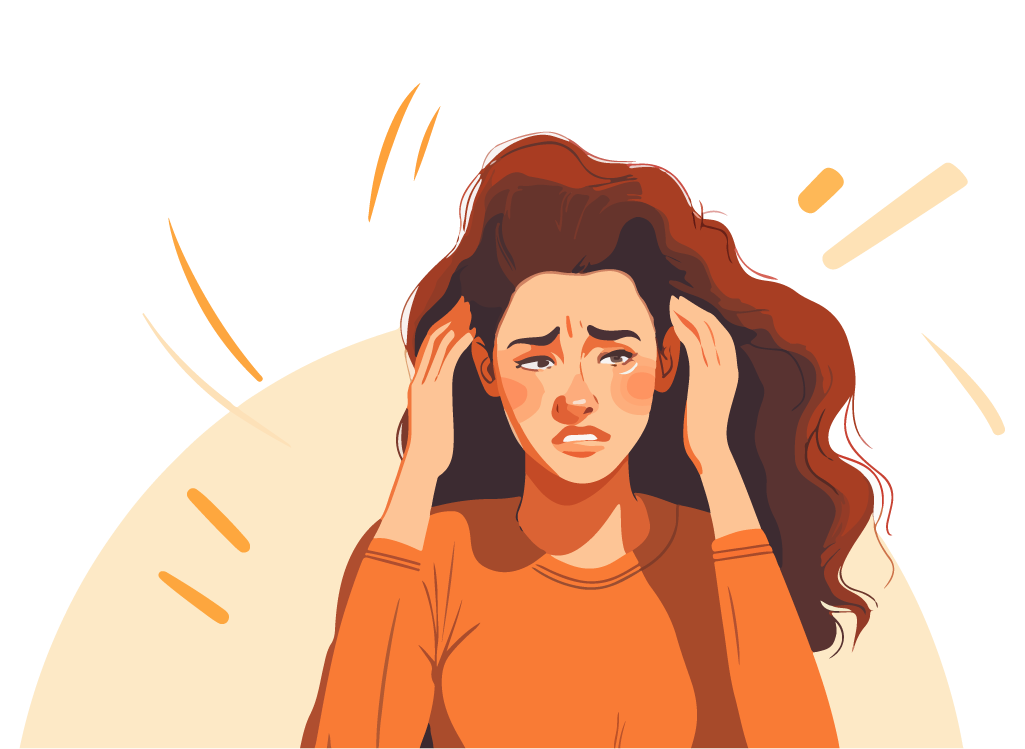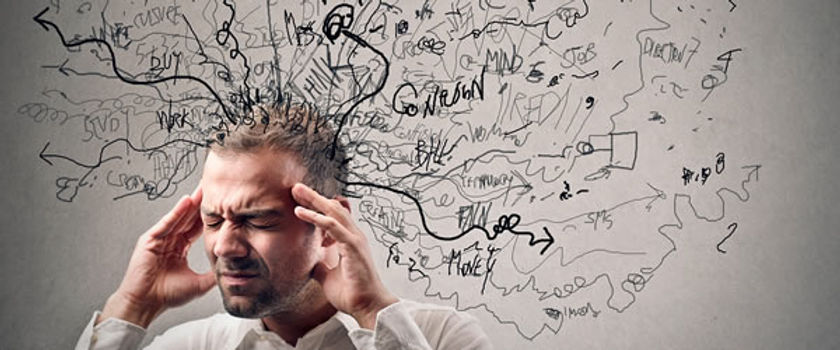Anxiety is a mental health condition characterized by excessive worry, fear, or nervousness about everyday situations. It often involves physical symptoms like a rapid heartbeat, sweating, and difficulty concentrating. While occasional anxiety is normal, chronic anxiety can interfere with daily life, making it challenging to manage tasks or social interactions.


What is Anxiety?
Anxiety is a normal response, and sometimes even beneficial in crises—it can help you pay attention and become aware of danger. It is designed to save you.
However, when these normal feelings of worry become excessive and constant fear,it can become dysfunctional. Anxiety disorders are the most common type of mental disorders and with the right treatment,you can lead a productive and healthy life!
• Anxiety refers to a feeling of apprehension about the future and is characterized by avoidance behavior and muscle tension.
• Fear is an emotional response to an immediate threat, whereas anxiety is a response to a future or anticipatory threat.
• Anxiety disorders are characterized by excessive anxiety and fear, which may cause you to avoid situations or triggers.
• These disorders can affect your performance at work or school, interpersonal relationships, and lead to emotional distress.

Anxiety Disorders
For a person to be diagnosed with an anxiety disorder, the anxiety or fear must:
• Hinder your ability to function normally
• Be out of proportion to the situation or trigger
• There are different types of anxiety disorders:
• Generalized Anxiety Disorder (GAD): This involves a persistent and excessive worry that hinders the person from their daily functioning. The constant tension may lead to physical symptoms like restlessness, trouble sleeping, difficulty concentrating, feeling on edge or very fatigued, and muscle tension. The anxiety can be related to minor matters like daily chores, as well as to job responsibilities, family health, etc.
• Phobias: Though we may use the word colloquially, a phobia is an excessive and consistent fear of a particular object, activity, or situation. The fear is irrational and severe, and usually, people with phobias know that, but find it tough to overcome. The fear causes distress, leading people to go to great lengths to avoid what they are scared of.
• Panic Disorder: The primary symptom is recurrent panic attacks, which cause extreme psychological and physical distress.
Social Anxiety Disorder
This is when a person feels uncomfortable and anxious in social interactions as they are fearful of embarrassing or humiliating themselves.
• This might hinder your daily functioning
• Lasts at least 6 months
• Symptoms persist for at least 6 months
Symptoms of Panic Attacks
Panic attacks can involve a range of intense symptoms, including:
• Palpitations
• Feeling of choking
• Trembling or shaking
• Chest pain
• Dizziness/feeling lightheaded
• Numbness or tingling
• Chills or hot flashes
• Nausea/stomach pain
• Fear of dying
• Feeling a loss of control
• Feeling detached
• Panic attacks can mimic heart attacks, so many people initially believe they are having a heart attack, which may lead to feeling more scared.
• Panic attacks may also accompany other disorders like depression or PTSD.
Separation Anxiety Disorder
A person with this disorder feels distressed and fearful when they are separated from those they are attached to.
This feeling is more than what is appropriate for the situation or person’s age and persists for at least 4 weeks in children and 6 months in adults.
• Fear of losing those they are attached to
• May refuse to go anywhere without that person
• May refuse to eat and sleep without that person
• Symptoms persist for at least 4 weeks in children and 6 months in adults
During Therapy for Anxiety
Anxiety, like Depression, can be completely managed through the process of therapy. While medication may provide relief from certain physical symptoms, it is not the cure.
• CBT and REBT have proved to be very effective as they involve working on cognitive distortions—unhealthy thought patterns that are unhelpful and cause anxiety.
• CBT can help you change the way you think, feel, and behave to make you feel less anxious by providing you with tools to cope.
• It reminds you that there are certain aspects within your control.
• The goal is to address and modify the thought patterns contributing to anxiety, offering a long-term strategy for management and relief.
Benefits of CBT:
CBT offers various benefits for managing anxiety, including identifying and addressing automatic negative thoughts (ANTs) that often cause distress.
• CBT helps you identify automatic negative thoughts (ANTs) which are usually the cause of anxiety and distress.
• Once you have identified these disturbing thought patterns, you can recognize your triggers.
• It expands and reinforces your coping abilities as an individual.
• Provides tools to tolerate and heal from triggering or distressing situations.
• Helps manage physical symptoms and panic attacks through this process.
• For dealing with phobias, CBT counters automatic negative thoughts and enables you to address fear and avoidance behavior.
• It is a step-by-step process—for example, starting with reading about a phobia-inducing subject and gradually increasing exposure.
• The process of therapy is layered and not linear, helping you change dysfunctional thought patterns and become a healthier individual.